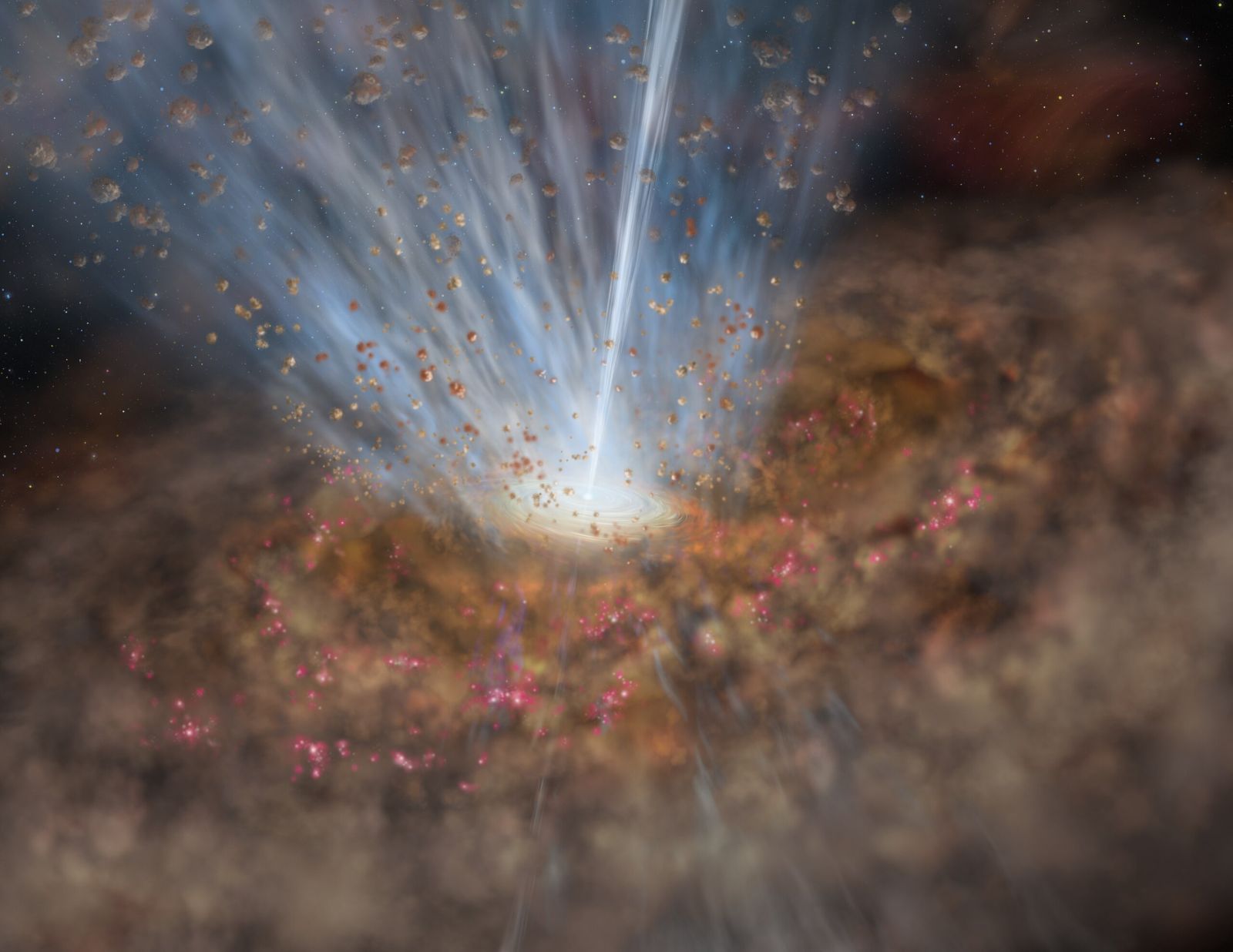Observation of a new physical phenomenon allowing the growth of black holes
Follow us on Google News (click on ☆)

Artist's conceptualization of the environment around the supermassive black hole at the center of Mrk 231.
Image International Gemini Observatory/AURA/Lynette Cook
A team of astronomers led by Northwestern University utilized data from the ALMA observatory to demonstrate that rotating magnetic winds accelerate the growth of supermassive black holes, similarly to star formation.
Researchers focused on the galaxy ESO320-G030, located 120 million light-years away, to unravel the mystery of supermassive black hole growth. By observing this particularly active galaxy, they found that powerful magnetic winds contributed to feeding the central black hole.
Astronomy & Astrophysics published these results this spring, offering a new perspective on galaxy evolution. Mark Gorski, the lead author of the study, emphasizes that rotating winds, accelerated by magnetic fields, allow black holes to grow in a manner similar to the birth of stars, but on a much different scale.
To probe the dense gas surrounding the central black hole of the ESO320-G030 galaxy, scientists analyzed the light of hydrogen cyanide molecules. The fine details revealed by the Doppler effect highlighted a rotating magnetized wind, contributing to black hole growth, unlike jets which tend to repel matter.
This discovery could be a common stage in the evolution of galaxies with supermassive black holes. Researchers now plan to examine other galaxies to determine the frequency of this phenomenon and understand the subsequent steps in black hole evolution.